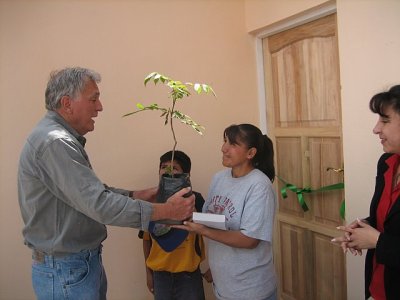This offhand response toward the end of the interview seems an appropriate representation of the extent of research some politicians, local or otherwise, undertake to make important, public policy decisions ... in the context of a strong antagonism towards anything that does not seem to fit their narrow ideology or interests rather than through actual analysis.
Since we now know that objectivity regarding this topic is lost in at least one corner of the Board of Supervisors chamber, let's restore it here and look at the biotech industry objectively, particularly at some very critical, crucial, undisputable facts.
Simply put, the Food and Drug Administration (FDA) wasn't allowed to do its job. Documents made public from a lawsuit (has anyone noticed how the public has to sue the government to get any answers to any relevant questions?) show that the overwhelming majority of FDA scientists felt that biotech foods were inherently dangerous and could create poisons or allergens, new diseases, or nutritional problems, particularly in infants and children.
These FDA scientists urged their superiors to require a long-term study. However, the FDA was under orders from the White House to promote the biotechnology industry. They consequently created a new position to bypass the science and the regular FDA channels of research and approval, called the "Deputy Commissioner of Policy," and hired Monsanto's former attorney to this position, Michael Taylor. Yes, you read correctly, an industry insider lawyer made, alone, a "scientific" decision that will affect the American population for the coming centuries.
So Taylor became the lone "decider" at the FDA, under Bush and in the interests of the biotech industry. I wish I was making this up, but it is a sad reality of today's government, that has totally escaped public control and escaped its own morality, if it even had any.
Taylor was in charge of policy when the GMO policy was created. That policy stated that the agency was not aware of any information showing that the foods created from these new experimental methods differed in any meaningful or uniform way from any other. On the basis of that one sentence, the FDA declared, "We require no safety studies whatsoever" ... this regarding a technology that is one of the biggest scientific breakthrough in decades, and radically alters the DNA of our food.
Consequently when Monsanto and others claimed that their foods were safe, the FDA had no further questions, having being reduced to nothing more than an impotent rubber stamp bureaucracy at the service of dominant corporate interests by the Bush administration.
Of course the FDA decision was an outright lie from the top. Not only was the agency aware of the important differences of GM foods, but the overwhelming consensus among its scientists-whose objections were suppressed-was that further studies were necessary before releasing these products to farmers and consumers.
The consistent denials and coverups about the health risks of GM foods are very similar to what went on with the tobacco and particularly the cigarette industry, as researches by the industry are rigged to guarantee conclusions of safety, the GM industry meticulously designing their so called studies to avoid finding problems.
The biotech industry has a genetically engineered counterpart to virtually every fruit, vegetable, grain and bean that is being sold in the United States. More than 172 different species have been field-trialed, with more than 50 000 field trials in the US alone.
Soy, corn, cottonseeds, canola, potatoes, cocoa, Hawaiian papaya, zucchini and yellow squash are currently the major GMO crops. There are many dairy products made from cows injected with rBGH (synthetic growth hormone), and there are genetically modified enzymes and food additives that are usually not listed on the label of processed foods. Many supplements are created from genetically engineered bacteria or microorganisms. The wine industry is looking at GMO grapes.
As GM crops are predictably and unavoidably beginning to contaminate all other forms of agriculture, European standards for organically grown food are being lowered to include trace amounts of GMOs, these amounts expected to rise significantly in the coming years, which is why a biotech industry representative stated cynically that “the cat is already out of the bag,” meaning that they had already altered the global food supply and that resistance was futile precisely because of contamination, while stating at the same time that contamination would not be a problem, yet suing farmers whose fields are contaminated ...
The transfer of genes is a very serious issue, ignored by the FDA and the industry. The only human feeding study ever conducted on GM foods demonstrated that the genes inserted into soybeans transfer into human intestinal bacteria DNA and remain there, integrated on a stable basis, never eliminated. The implications regarding the genes that produce GM pesticides, that could remain in the intestinal flora, or transfer into our own cellular DNA, causing it to produce foreign proteins, could be devastating.
Back in the 1980s, 100 people died and anywhere between 5,000 to 10,000 fell sick or were permanently disabled after ingesting a brand of L-tryptophan supplement that was manufactured through a genetically modified bacteria. The FDA however, after pulling all such supplements off the market, withheld information from the public and from Congress about the genetic engineering aspect of the problem.
In Europe, a GM food researcher named Arpad Pusztai discovered that supposedly harmless GM potatoes caused massive damages to rats. He was fired from his job after 35 years and silenced with threats of a lawsuit. In Russia, a leading researcher in the Russian Academy of Sciences discovered that female rats that were fed GM soy had an infant mortality rate that was over 50 percent within the first three weeks, compared to only 10 percent of the offspring with mothers who were fed non-GM soy. This scientist has since been told she could not do any more GM food research.
Most people do not realize that there have not been extensive and independent tests on GM foods. Most people do not even know what GMO means, yet they ingest an unproven, experimental, highly controversial, untested, revolutionary "Frankenstein" food that could have devastating consequences for their health and particularly that of their children ...
The points made by Rob Brown on the GMO issue during his interview are all invalid.
It is easy to demonstrate that those who have an "agenda" are not the people who seek to get a moratorium on all GMOs until further studies are completed by independent scientists, a process which any reasonable person would demand and support, the heavy-handed agenda comes from those who have stealthily forced this technology on the American consumer without such proper and prudent studies, without the labeling of GM products as is required in Europe, and with the help of a corrupted bureaucracy; the only existing agenda here comes from the industry itself and those who support it and its distortion and strangulation of science in the name of immediate profits.
Objective scientific research is not an agenda, it is not political ... to ask that FDA scientists be allowed to do their jobs is not an agenda ... to request that a new product be held until considered safe by the FDA after such required studies is not an agenda.
And no, the power to decide whether to have GMOs in Lake County cannot be given exclusively to farmers or the farm bureau, who are not scientists and have no appropriate science upon which to base their decisions, it must be given to the greater public through he restoration of an honest and independent FDA process of scientific research and approval or rejection of GM products. Short of this and under current corrupt conditions, the American public must educate itself and demand to be heard, and to be respected. Alfalfa is not the only issue in Lake County, other GM crops will eventually be available to replace traditional crops, as in the case of winegrapes, and GE pears will certainly be available at some point.
According to the Chicago Tribune, the Bush administration is attempting to force famine stricken third world countries, mostly in sub-Saharan Africa, to plant genetically engineered crops, as part of a $770 million aid package, just as it has bullied Iraq to also plant GE crops.
These untested and mostly unregulated GE crops are considered controversial all over the world; at least 40 nations have restricted GE farming and GE ingredients in foods by requiring, because of public demand, mandatory labeling. (A majority of the American public has also demanded labeling of GMO products, but in America, giant corporations have more rights and apparently more powerful votes than ordinary citizens, particularly under Republican regime). A number of nations and regions have banned GMOs in agriculture altogether, until further research proves it is safe.
Beyond health and environmental concerns, and contrary to industry propaganda, GE crops do not significantly increase yields, but rather force farmers to stop saving their seeds and instead buy toxic chemicals and highly priced patented seeds from biotech companies such as Monsanto, Syngenta, Bayer, Dupont, Dow's and BASF. Once they do, they no longer have a choice, as their fields are contaminated at the DNA level and will remain so forever.
Is forever a good choice concerning an untested and potentially dangerous technology that could affect our own human DNA in unpredictable ways?
Sources of information:
Books: “Seeds of Deception” and “Genetic Roulette,” both by Jeffrey Smith; “Genetically Engineered Foods,” by Martin Teitel and Kimberley A. Wilson; “Codex Alimentarius: Global Food Imperialism,” by Scott Tips.
The Non-GMO Project, a nonprofit organization created by leaders representing all sectors of the organic and natural products industry in the US and Canada.
Raphael Montoliu live in Lakeport.
{mos_sb_discuss:4}




 How to resolve AdBlock issue?
How to resolve AdBlock issue? 



